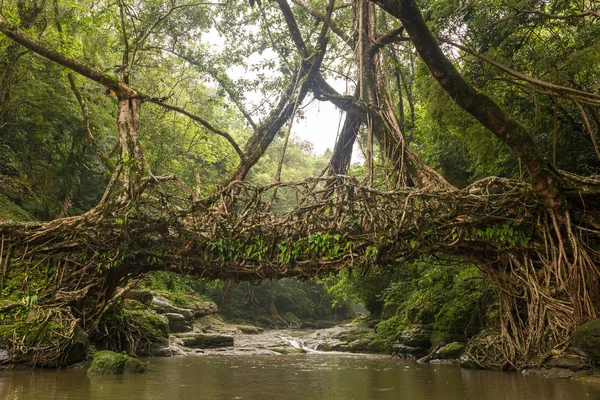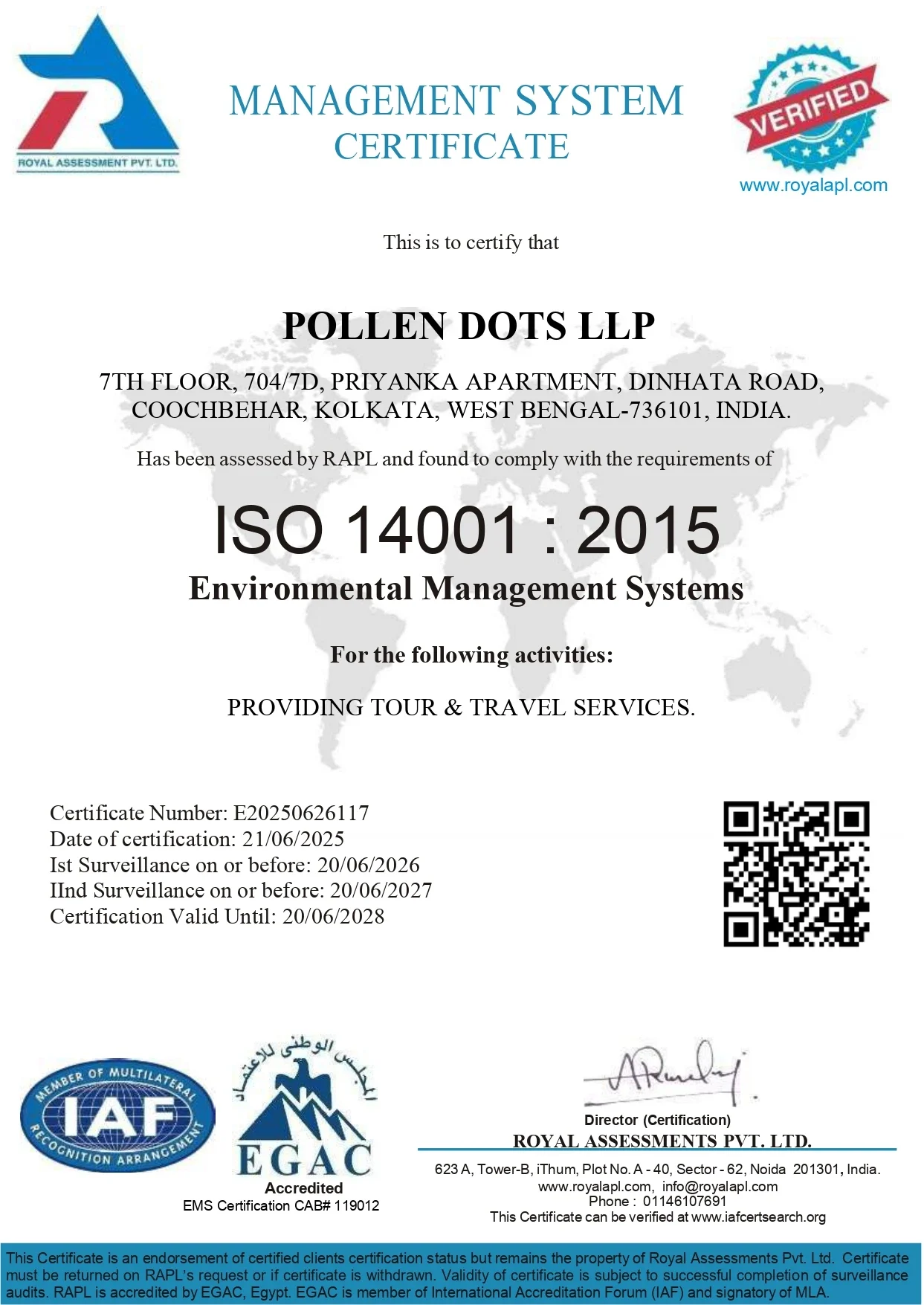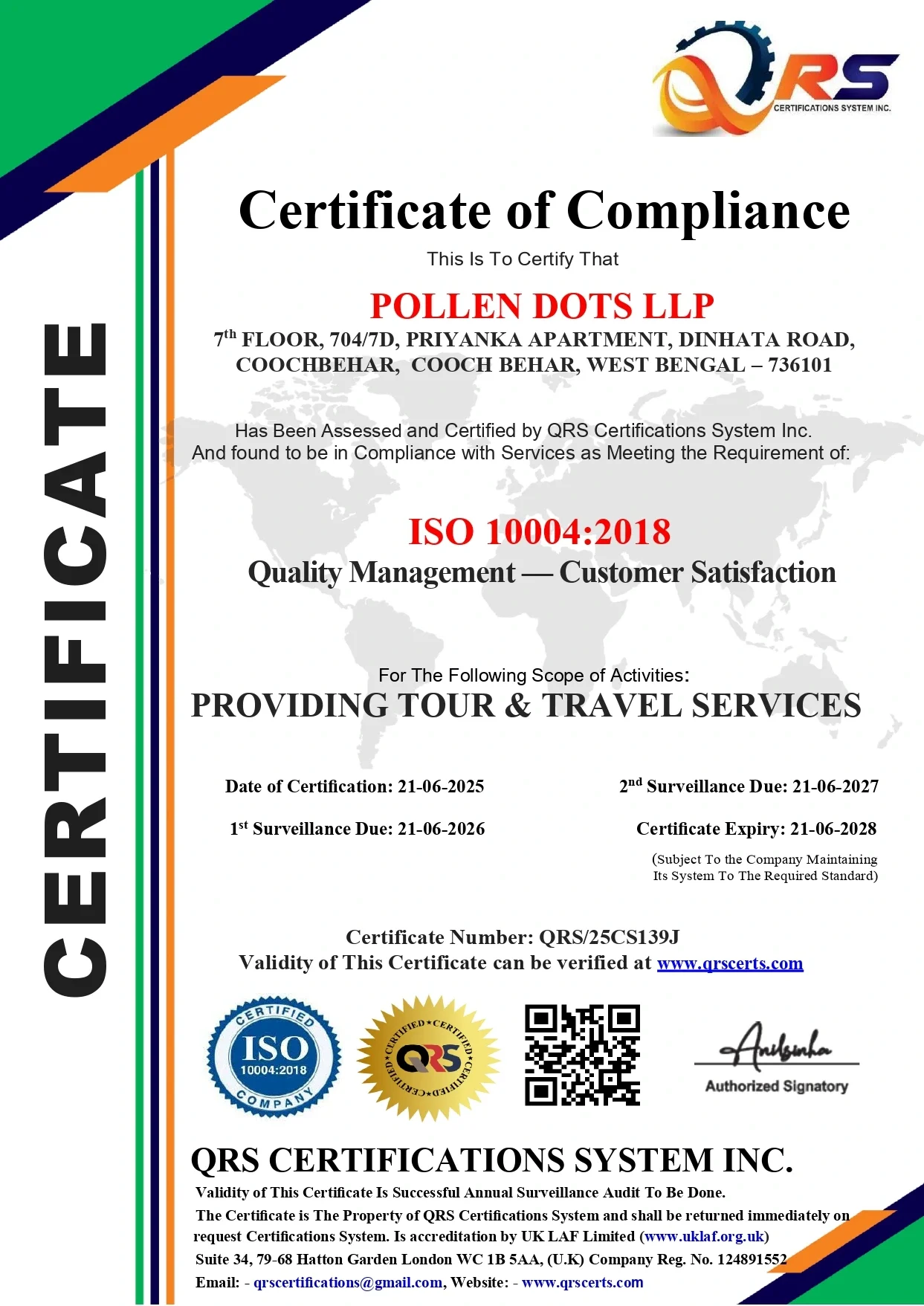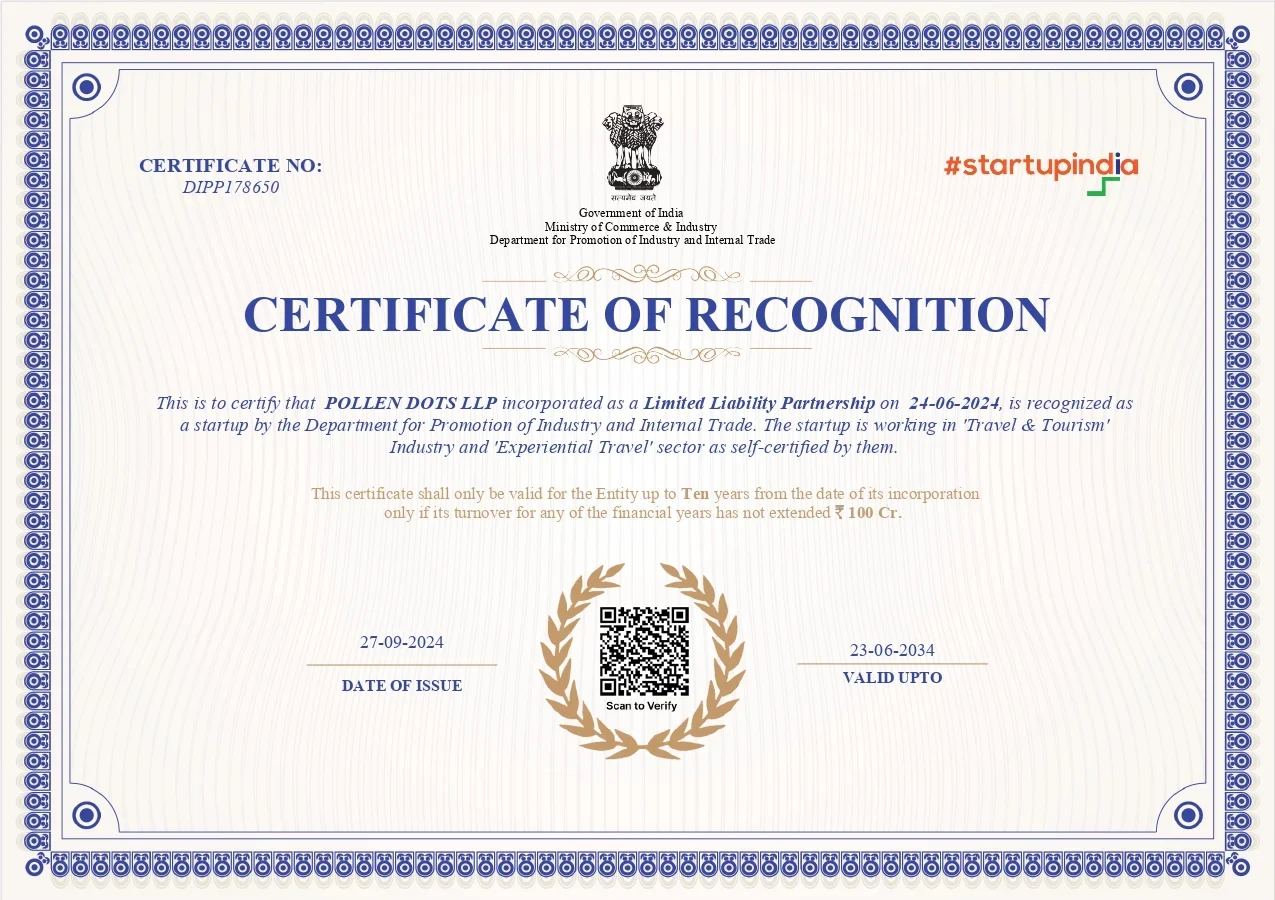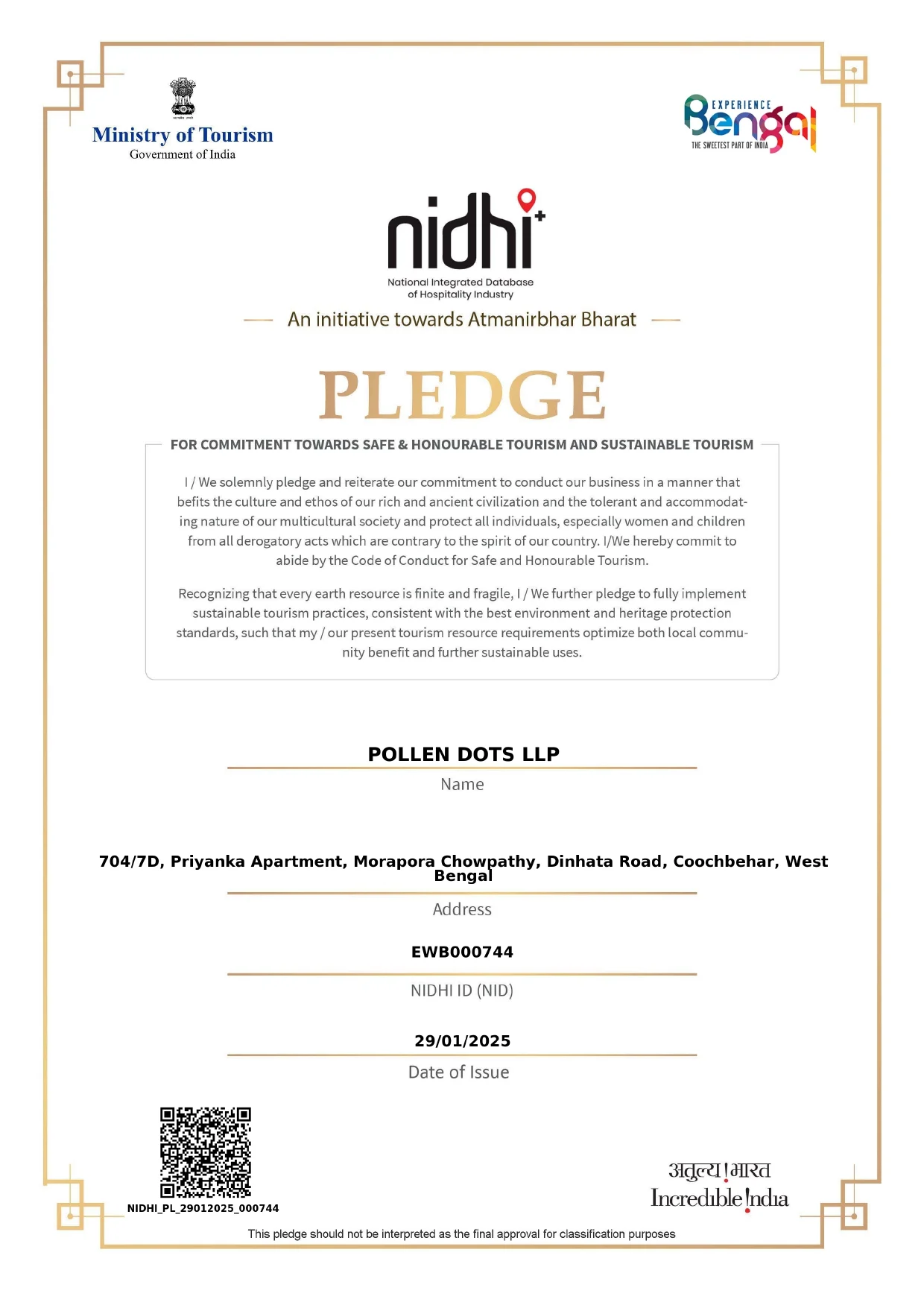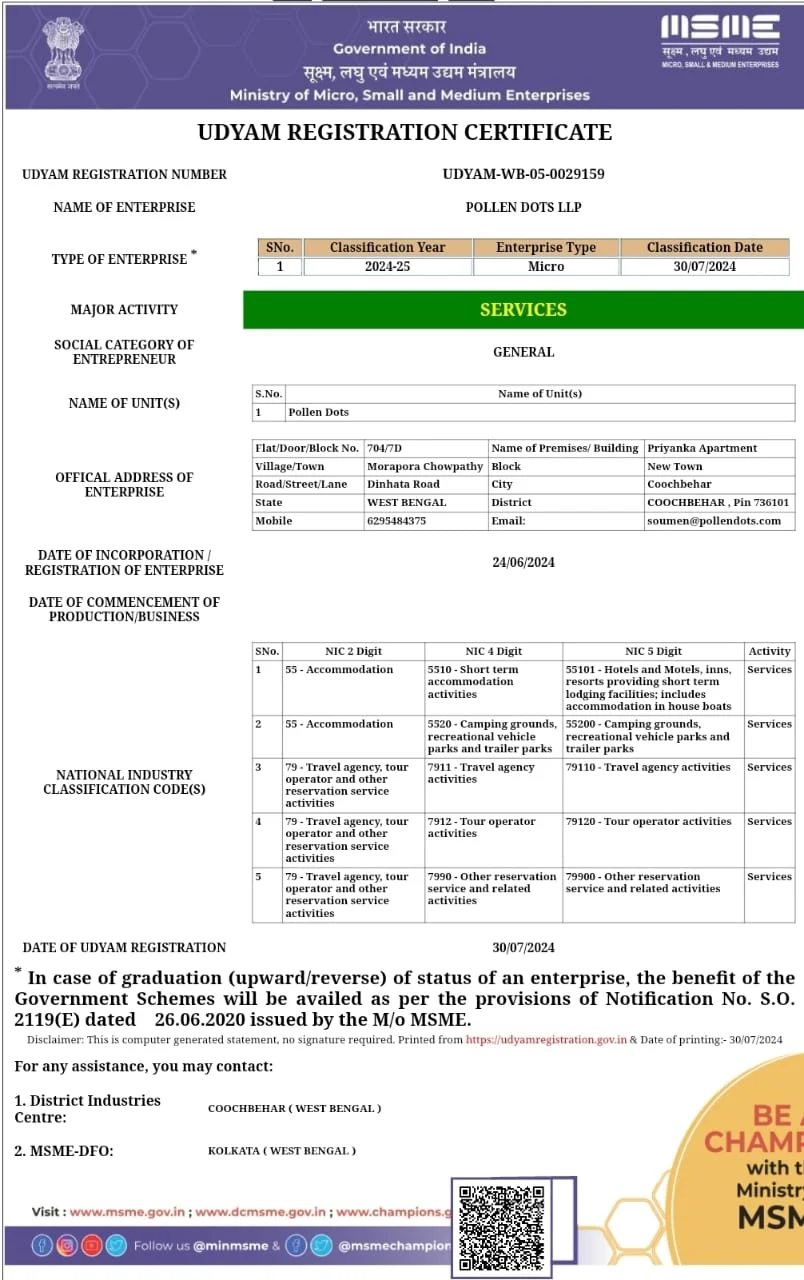When the Sky is a Storyteller”
Cherrapunjee isn’t just about heavy rainfall. It’s about how people live with the rain — not against it. It’s one of the few places where weather becomes a part of memory. Here, conversations pause mid-sentence when the rain thickens. Tea tastes better under tin roofs. Children play barefoot in puddles — because wet isn’t a nuisance, it’s a way of life.
The Khasi call this land Sohra — a name that lives in lullabies, local legends, and laughter.
Living Bridges, Living Patience
One of the most iconic gifts of Cherrapunjee is its living root bridges. These are not made — they are grown. Over decades, villagers guide the roots of the Ficus elastica tree across streams until they take shape and strength.
They’re not for show — they’re used by schoolchildren, farmers, elders. Each bridge is a lesson in time, resilience, and care — no shortcuts, no urgency.
We never asked the trees to hurry,” says Sukher, a local guide. “The forest taught us to wait.”

Snippets in the Mist
- The Hills Echo Differently:
- In some corners, you’ll hear folk songs carried across valleys. They’re not sung loud — they’re meant for those who listen.
- The Orange Vendor by the Cliff:
- He doesn’t just sell fruit. He explains which tree it came from, when it was picked, and how the skin makes a great face pack. Everything here comes with a story.
- Monoliths in the Grass:
- Scattered across meadows, they stand like old sentinels. Some say they mark ancient clan gatherings, others call them waypoints for the soul. No one knows for sure — and maybe that’s the beauty.

Interesting Insight: Rain as Ritual
Locals in Sohra don’t treat rain as a problem to escape. Rain festivals, traditional homes with slit ventilation, rain-harvesting pits — all speak of a lifestyle tuned to monsoon rhythms. Many Khasi folktales even begin with the weather — as if the sky is the first narrator.
Know Before You Go: Travel Tips for Cherrapunjee
- Getting there: Around 55 km from Shillong by road. The drive itself is scenic, especially during monsoon.
- Best time to visit: October to May for clearer skies; June to September for dramatic monsoon beauty.
- What to explore: Arwah Caves, Nohkalikai Falls, Double Decker Root Bridge (Tyrna), local Khasi cuisine.
- Stay options: Homestays in Laitkynsew or eco-lodges around Tyrna offer comfort with intimacy.
Cherrapunjee doesn’t put on a show — it simply exists with quiet power. Every sound, every step, every shade of mist has a place. Here, rain doesn’t stop life. It writes it.
In Cherrapunjee, even silence has a rhythm — and the clouds know it by heart.”

